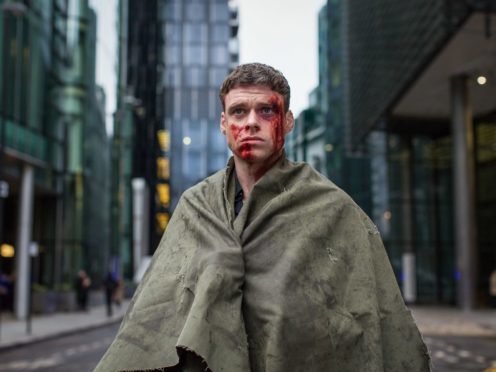BBC One hit drama Bodyguard has ended with a twist revealing who was responsible for the death of Home Secretary Julia Montague.
The six-part Jed Mercurio political thriller concluded with a revelation about the fatal explosion which killed Keeley Hawes’s character.
It was revealed that Nadia Ali, the thwarted terrorist from the first episode, created the fatal bomb.
Oh my days, not a single minute during the whole #bodyguard series that I wasn't on edge. Genuinely the best drama the BBC have produced 🎬👏 pic.twitter.com/HvDB62Z547
— Dan Smith (@danielsmith89) September 23, 2018
She was working with criminal Luke Aitkens, who was aided by police insider CSI Lorraine Craddock.
The revelation came at the end of a tense episode which saw Army veteran and close protection officer Sergeant David Budd, played by Richard Madden, himself strapped into a suicide vest.
Budd finally presents himself for counselling for his PTSD, and the finale hinted at a happy ending for the bodyguard and his wife.
For what is a man, what has he got?If not himself, then he has naughtTo say the things he truly feels and not the words of one who kneelsThe record shows he took the blows and did it his way.#Bodyguard https://t.co/t8LPZKN515
— John Strickland (@JohnStrickland6) September 23, 2018
Montague was planning to push through laws which would give security services “more of an upper hand” against organised crime.
This motivated Aitkens, who was said to need corruptible police to stay safe from prosecution.
Ali was revealed to have passed on information about Budd’s children and to have been behind all the bombs used to wreak havoc.
She said: “I’m a jihadi.”
Ali revealed that she provided the bombs to Aitkens for money to fund further terrorist activity.
An encounter with Aitkens left Budd strapped into a suicide vest, leading to a dramatic standoff.
#Bodyguard when Julia didn't appear at the end of the episode pic.twitter.com/ZxEO83fLug
— Brooke (@brookas11) September 23, 2018
Richard Longcross was arrested after triggering a trap left by Budd, whose wife was watching on as he stood in the explosive vest.
But his suspected involvement was a diversion by Ali.
Head of MI5 Stephen Hunter-Dunn was also watching the showdown and seen to be plotting to frame Budd with the help of Mike Travis.
The release of the kompromat tarred Hunter-Dunn’s reputation and that of the Prime Minister John Vosler.
Vicky Budd bravely joined her husband, leading police to cancel an order for a fatal shot and unearthing the kompromat.
Budd unstrapped himself from the lethal vest in a nerve-wracking scene.
Craddock met with crime kingpin Aitkens, who said the assassination was “nothing personal”.
At this point in #Bodyguard, I’m so suspicious of everyone, I’m starting to think even *I* was involved…
— James Moran (@jamesmoran) September 23, 2018
In the closing scene of the episode, Budd is seen driving off with his children and his wife.
The first episode attracted 10.4 million viewers and dominated the audience share, according to the BBC.
These are the highest figures for a programme launch since 2006.
Mercurio has hinted at the possibility of the show returning for another series.
In an interview with The Sun, he said: “If the ratings hadn’t been quite so high, then possibly everybody involved, including the BBC, would have said, ‘Well that was a nice little series but we’re just going to leave it at that and there won’t be any more’.
“So you are a hostage to fortune in that sense. And we do feel very privileged and fortunate that there’s been such a response that it gives us that opportunity to at least think about doing more.”
He added: “It’s probably fair to say we would probably approach any thoughts of a second series with the idea that it would create the opportunity for a third or fourth.”
The finale had viewers gripped but divided by the ending.
And @Tommyblx wrote on Twitter: “How more British can you get that the final scenes in the biggest drama series in 20 years are a trip to occupational health and driving away in a Nissan.”
How more British can you get that the final scenes in the biggest drama series in 20 years are a trip to occupational health and driving away in a Nissan. #bodyguard
— Tommo Walters (@Tommyblx) September 23, 2018
@ItsAlfieGreen wrote: “Ugh. Bodyguard finale was so far fetched. As if he’d get a mental health appointment within a week…”
Ugh. #Bodyguard finale was so far fetched. As if he'd get a mental health appointment within a week…
— Alfie Green (@ItsAlfieGreen) September 23, 2018
